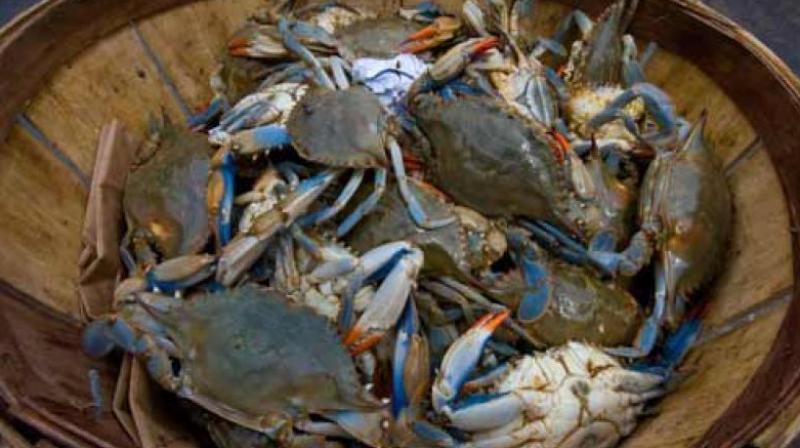Grow crabs in boxes for big bucks

Rajahmundry: To tap the vast export potential mainly to the Singapore and Malaysia markets, crab culture is being taken up in an innovative manner in boxes floating on brackish water tanks in coastal villages in Kakinada and Katrenikona mandals in East Godavari district. Crab hatchlings of Filla ferrata and Ola vafia are being collected locally or are imported from the Central Institute of Brackish Water Aquaculture, Chennai, Rajiv Gandhi Centre for Aquaculture, Visakhapatnam and from hatcheries located at Odisha, to be used for culture in plastic boxes.
Aquaculture farmer make baskets measuring 1-ft by 1-ft by 9 inches with holes to facilitate flow of water. A crab hatchling weighing about 100 gm is placed in each basket. The farmers make a big frame with PVC pipes to place 72 boxes in four rows. These are arranged in a tank and the boxes placed in such frames float in the water. The salinity of the water in the tank has to be maintained between 10-25 parts per trillion.
The farmer has to feed the crab hatchlings in the boxes regularly. As the feed is placed in the box, the chance of it either being wasted by falling into the tank water or failing to reach the hatchlings are fewer. The boxes are kept clean by removing the shells as the crabs molt at regular intervals. In about four months, the hatchlings grow to adulthood and their weight increases to 800 gm. These are ready for sale for consumption in local markets or for export.
A crab that weighs about 800 gm will fetch between Rs 1,000 and Rs 1,200 per kg in the export market. Fisheries authorities are encouraging the local aquaculture farmers to take up crab culture in floating boxes in about 3,000 acres in parts of Katrenikona mandal. Some farmers in Talla-revu and other areas have started crab culture in an innovative manner on commercial lines.
The authorities said that unlike the traditional culture, the new method helps farmers earn good revenue as there is a huge demand for crabs in both local and foreign markets. Unlike shrimp culture where shrimps are more vulnerable to infections and loss of demand in the international market, crab culture is free from such issues. The farmer has to keep the boxes clean by removing shells and leftover food particles so that the crabs will grow in size, stay healthy and fetch good revenue. Fisheries deputy director P. Jaya Rao said, “We are encouraging innovative practice of crab culture in floating boxes in brackish water tanks in parts of East Godavari as there is a huge demand for crab meat in both domestic and international market.”

